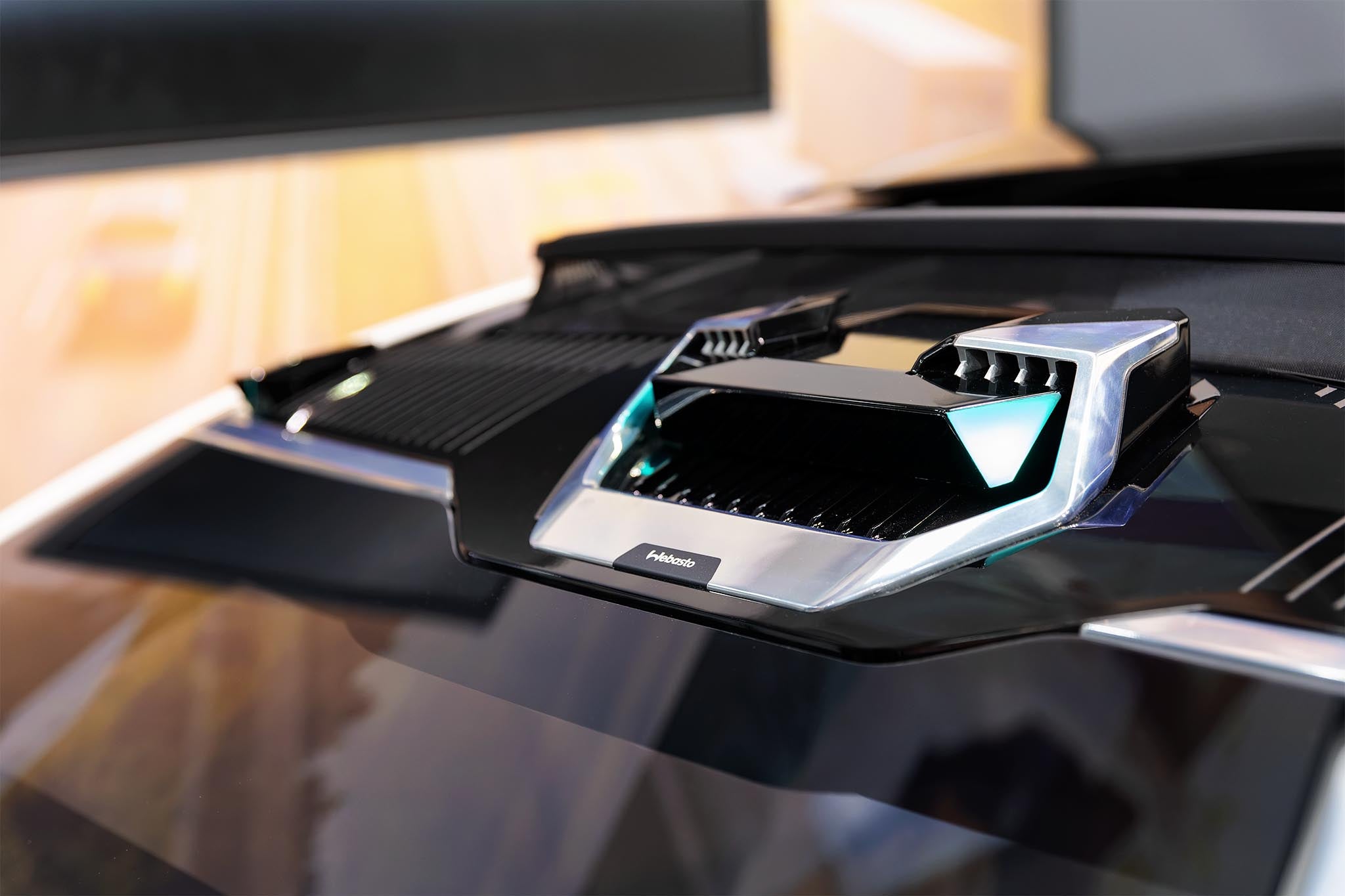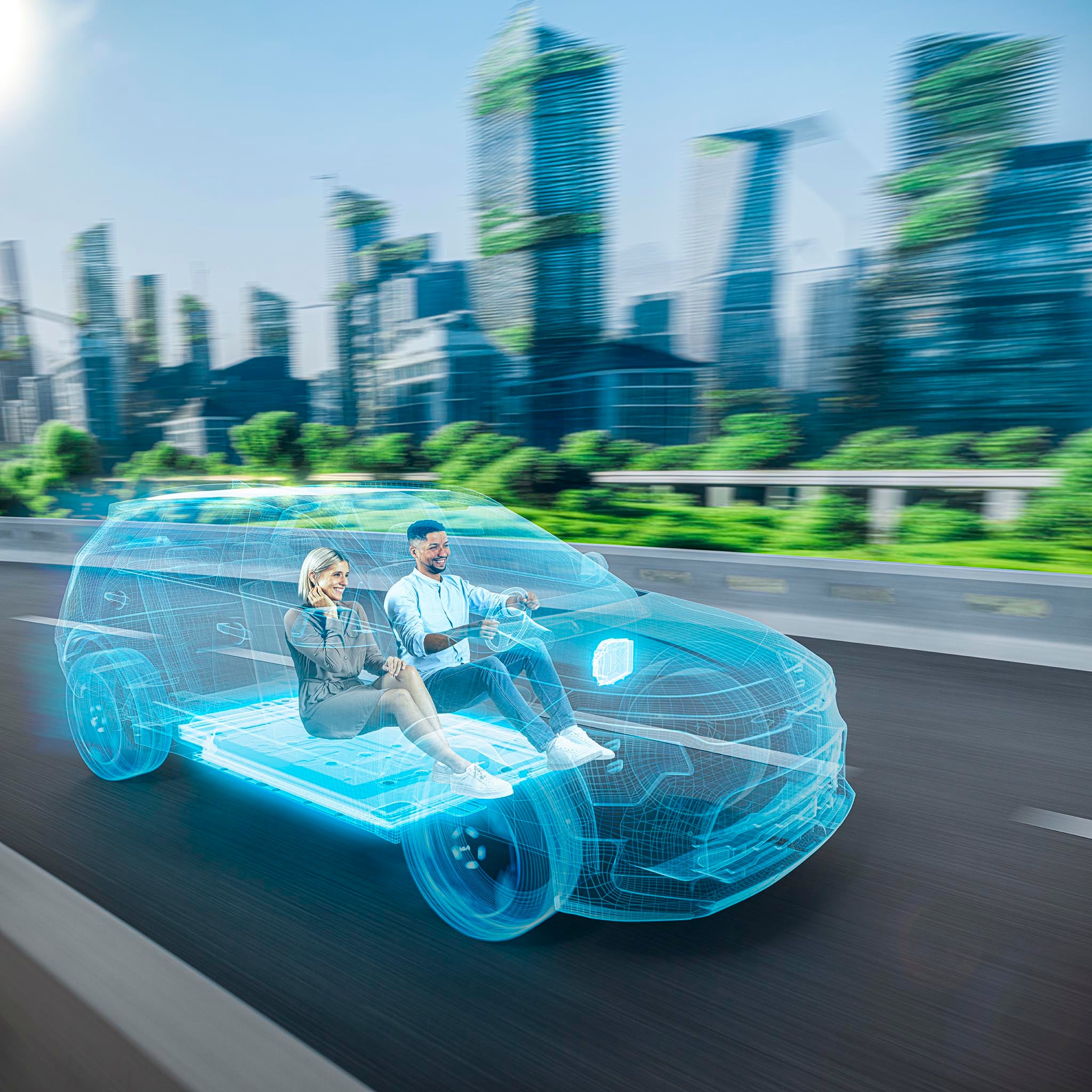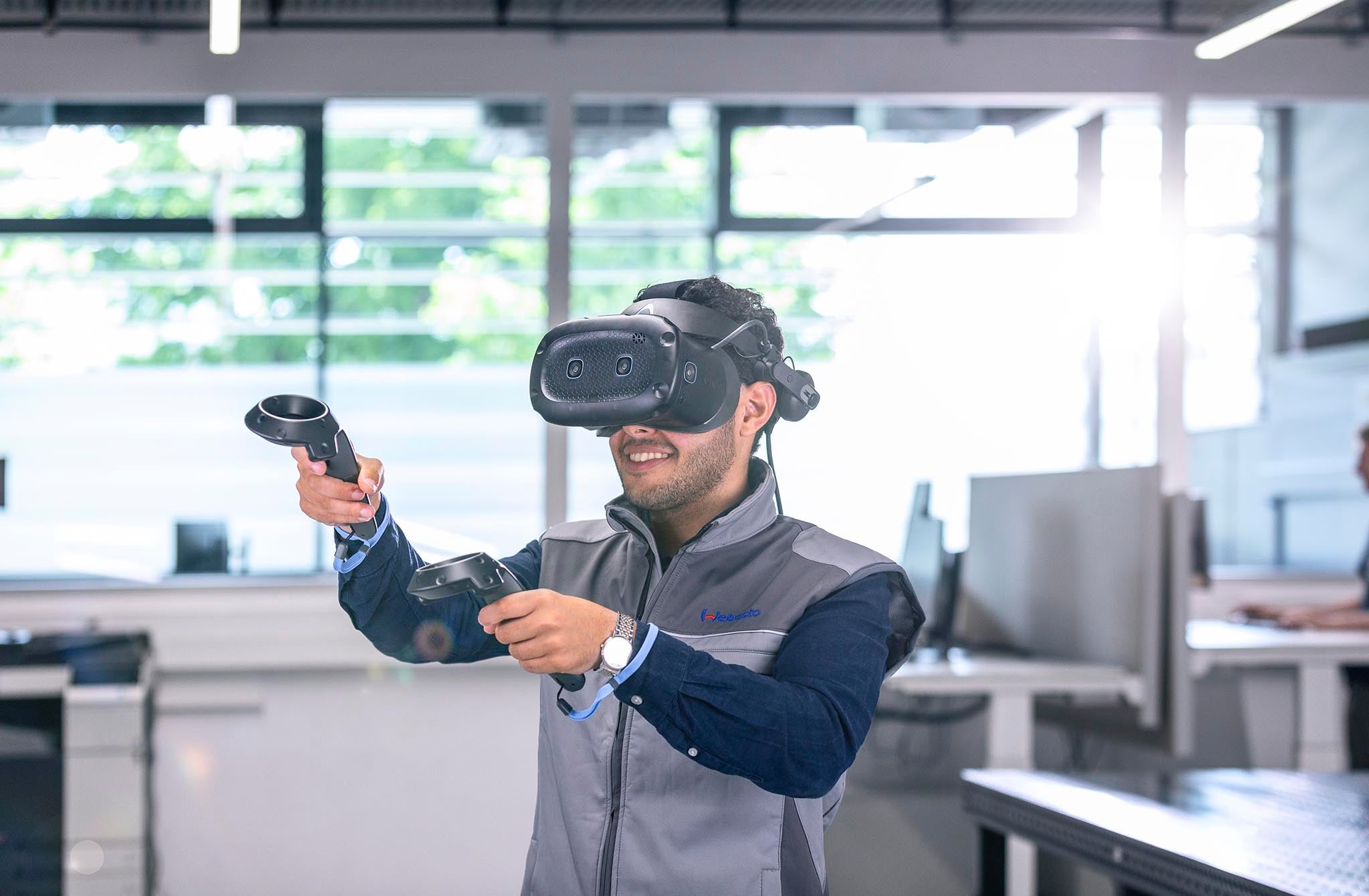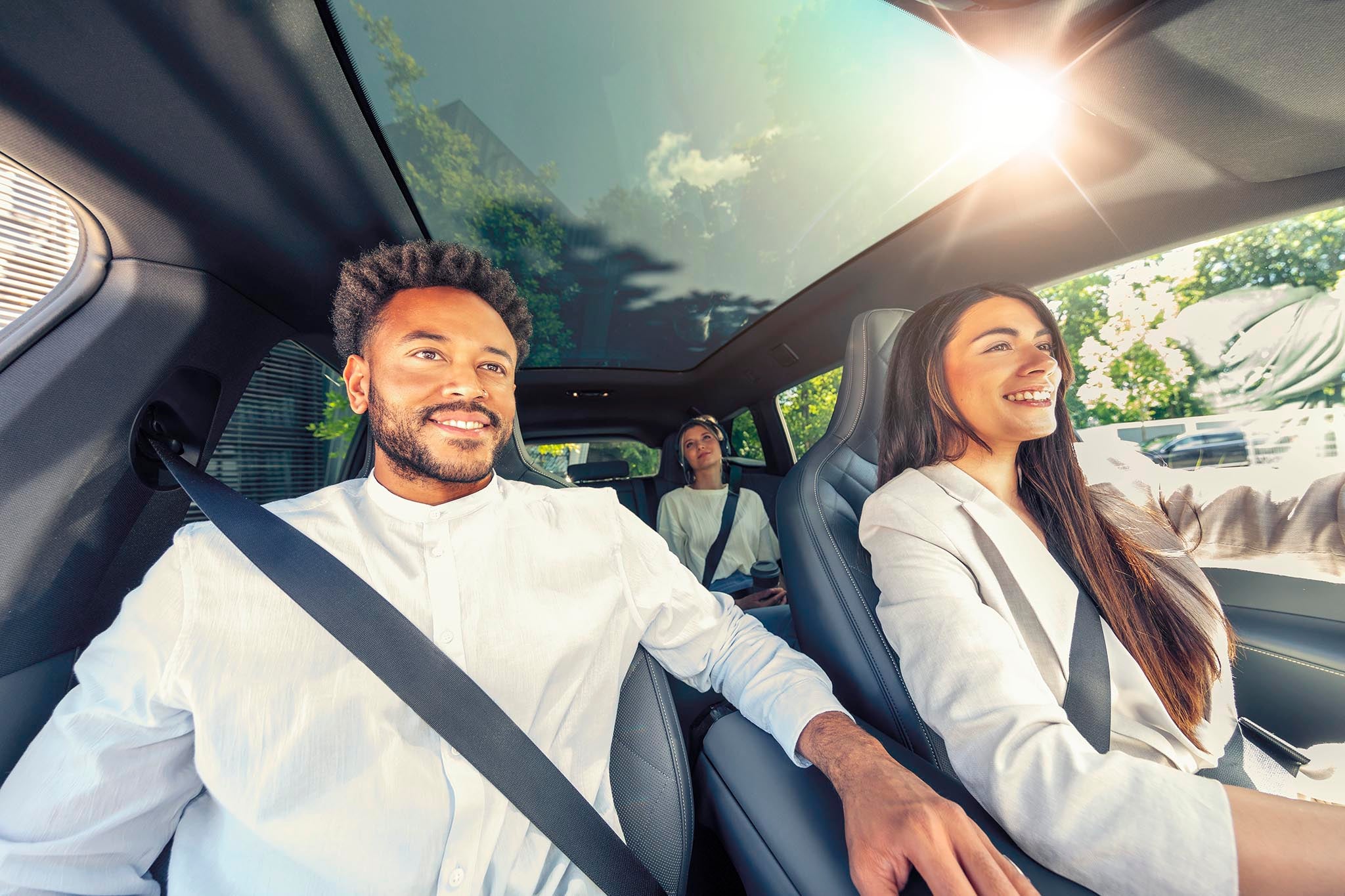The roof for future
autonomous driving

The Webasto Group’s innovative portfolio of high-quality roofs and heating systems is valued by vehicle owners and manufacturers all over the world. From the classic sunroof to convertible and large-area panoramic roofs, Webasto offers the appropriate solution for every class and model of vehicle. With the concept of the Roof Sensor Module (RSM), the group has taken an important step in the direction of autonomous driving.
The idea
Reliably sensing the surrounding environment, recognizing obstacles and hazards in all weather conditions, ensuring the safety of all road users and pedestrians – the transition from a classic vehicle to an autonomous one presents automakers with completely new challenges. “Camera, radar and lidar technologies provide the technical basis for this, but the ideal positioning of these sensor systems is what delivers a perfect result,” explains Jan Henning Mehlfeldt, responsible for the global roof business at Webasto. “Integrating sensor technology into the car roof, which is the highest point of the vehicle, is therefore a logical step for us as a roof systems specialist, and it delivers a perfect solution for the future of autonomous mobility.”

Trendsetter in the roof business
The Webasto Group is among the 100 largest suppliers to the automotive industry worldwide. The company’s product portfolio comprises in-house developed roof systems, heating and cooling systems for various types of vehicle, and batterie solutions for hybrid and electric vehicles.
With a heightened awareness of current trends, a deep understanding of the automotive industry’s needs, and a high level of development expertise, Webasto repeatedly succeeds in accelerating innovations to full speed and setting new trends in the automotive industry.
“We are consistently strengthening our roof business, which is the backbone of our company, and developing new fields of business in which we are able to fully demonstrate our capabilities. We have been closely monitoring the trend toward autonomous driving and ascertained that practically all vehicle prototypes are equipped with sensors on the roof. In terms of appearance and functionality it was immediately apparent to us that this is where we come into play”, explains Jan Henning Mehlfeldt about the idea behind the Roof Sensor Module. “So we set ourselves the objective of developing a visually appealing integrated solution. Our roof system is intended to optimize safety, appearance, compactness and maintainability. Moreover, it must ultimately be possible to seamlessly integrate the compact, pre-assembled and tested sensor module into automakers’ production lines!”

From concept to reality
Over recent years, experts at Webasto have been working relentlessly to build up this field of business relating to automated and autonomous vehicles and turn the Roof Sensor Module product concept into reality.

2023 Webasto showed an assembled vehicle prototype with a fully functional elegant roof. “We have held many intensive discussions with customers and the feedback confirms a great deal of interest. Particularly convincing is our modular concept, which allows individual customer wishes to be fulfilled.
Openable roof systems, solar roofs, ambient lighting and switchable glazing are examples of features that can be supplemented with a customizable selection of sensor and positioning technologies.
The whole bandwidth is available to us here,” confirms the member of the management board.
In addition to the modular concept, Webasto is continuously developing the Roof Sensor Modules for autonomous driving: by combining innovative sensor technologies, such as camera, radar and lidar, complete roof modules have been developed, which increase the application possibilities: from robot cabs to people movers and autonomous trucks, everything is possible. It is important that the sensors function perfectly in all weather conditions. To achieve this, Webasto combines the sensor modules with innovative and automated cleaning and thermal management systems that clean, heat, cool or de-ice the sensors, depending on the weather conditions.
For Webasto, this further development represents an expansion of the product portfolio for autonomous driving, as confirmed by a member of the Management Board:
“With this expansion of our portfolio, we are once again demonstrating our commitment to actively shaping the future of autonomous driving. After all, this will change the way we get around even more drastically than electromobility. We offer our customers tailor-made solutions in these areas and support them from concept to industrialization.”

Innovative design

Webasto is able to leverage its capabilities to the full in realizing the RSM. With the world’s broadest product portfolio of sunroofs and panoramic roofs, Webasto possesses all the expertise necessary for elegantly integrating sensor technology into the roof.
By utilizing state-of-the-art 3D moldable materials, the components are seamlessly embedded into the roof system. This elegant appearance also impacts positively on aerodynamics and vehicle architecture.
“Let’s be frank,” says Jan Henning Mehlfeldt with a twinkle in his eye, “the autonomous vehicles we see on the road right now still have some room for improving their appearance. We can take full advantage of this with our Roof Sensor Module.”
Put to the acid test
Like all of Webasto’s innovative solutions, the RSM – with its integrated sensor technology – must meet the highest quality standards. Webasto leaves nothing to chance here. At the 2,000-square-meter validation center in Stockdorf, roof systems and components are subjected to intensive testing to ensure their high quality.

To keep noise levels as low as possible when opening and closing the roof, noise emissions are investigated using an artificial test head to simulate how vehicle occupants perceive the noise. Where necessary, these measurements are used to optimize the noise behavior. In Webasto’s rain and spray test chamber, roof systems must demonstrate their ability to keep vehicle occupants dry – even during the most heavy rain showers.
The strength and robustness of Webasto’s roof systems are tested on road surfaces of varying conditions ranging from smooth asphalt to bumpy dirt tracks. One of the test facilities is furthermore equipped with a climate chamber, which allows variables such as temperature and humidity to be incorporated into the vibration tests.
“We possess a high level of development expertise and huge experience in quality management for our global customer base,” emphasizes Mehlfeldt. “And this will also be important to us as we look to the future. Because we want the RSM to make a significant contribution to Webasto’s core business as well as to drive the expansion of other market segments. It will definitely remain exciting for us and I am really pleased that we are helping to shape the future of autonomous driving!”






